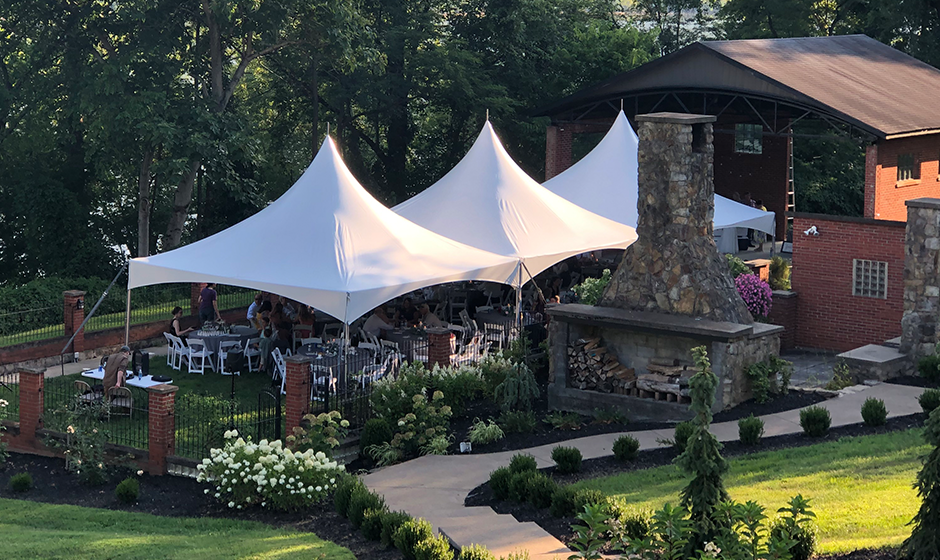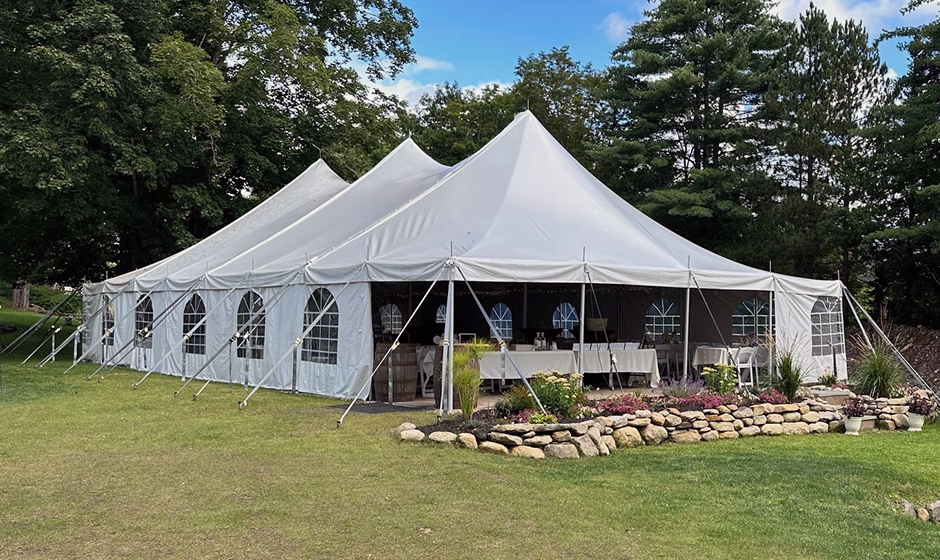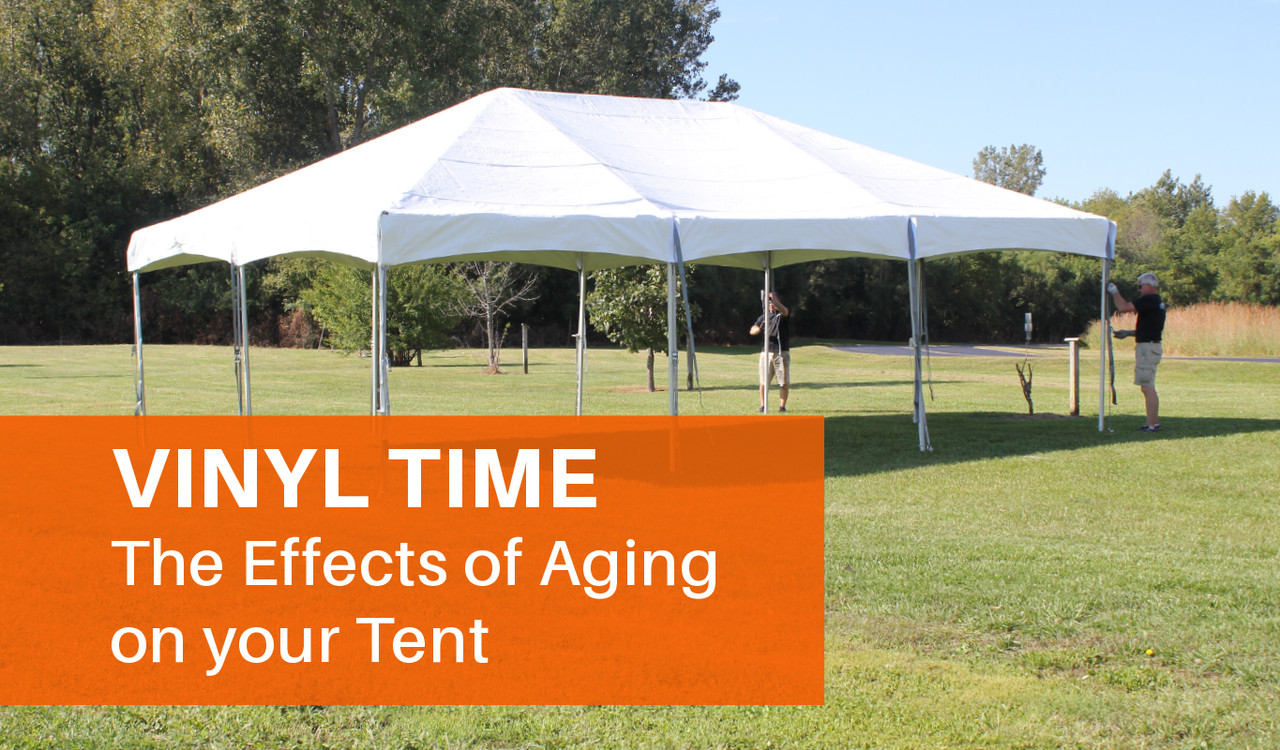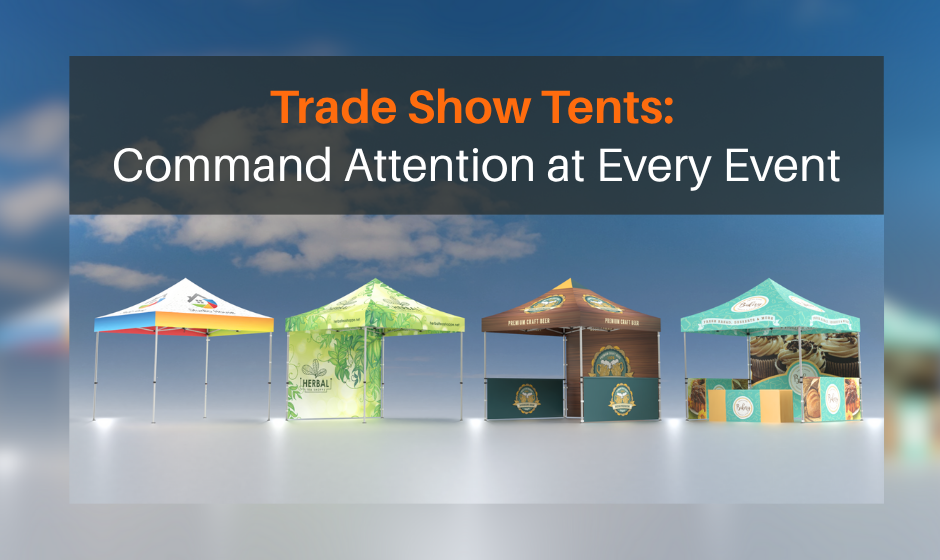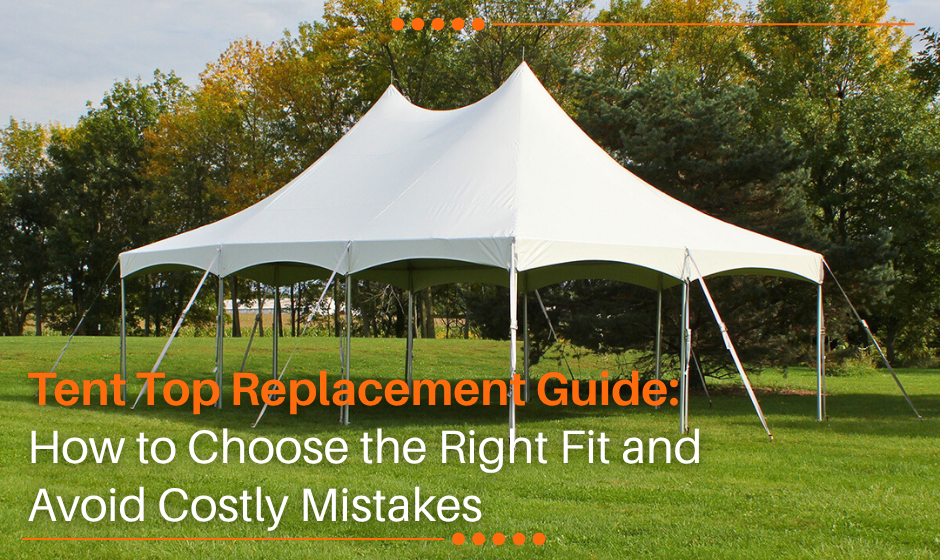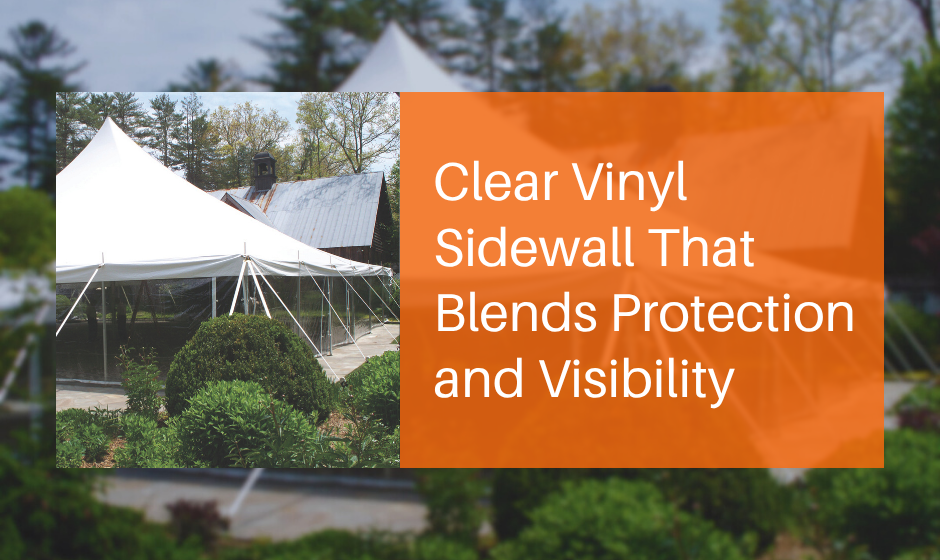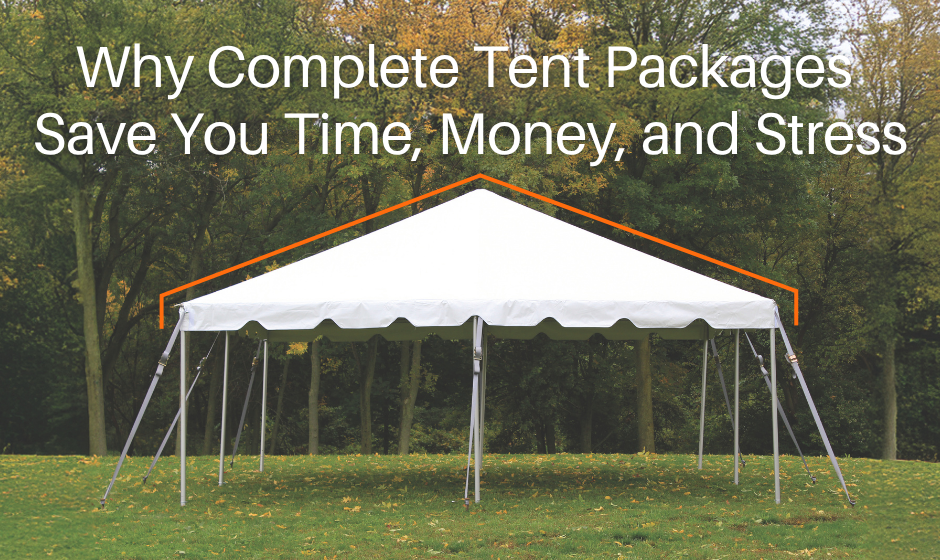There are many different actions that you can take as the owner of a vinyl fabric tent that will help you extend the life of your item. Making sure that you don’t over-tension the fabric, keeping it clean of debris and soil, and using safe cleaners before drying and storing it away are all critical. Proper maintenance ensures your vinyl tent will remain useful and vibrant for years to come, regardless of the challenges it faces.
However, just as we humans eventually start to show the signs of age, so too will your tent one day. “But Mr. Blogwriter, what can be done?!?” you may be loudly shouting at your computer screen as you read these words of woe. And I, from across the ether, will only sadly shake my head at what I imagine must be your deepest chagrin. For there is nothing that can be done to stave off the inevitable end of your vinyl tent fabric. Let’s take a closer look at its lifecycle and what you can do to maximize its longevity!

1-5 Years: A Tent’s Prime
At this point in the life of your vinyl tent, the fabric is newly crafted into its final form and has its whole life ahead of it. This is the time when the fabric is strongest, with the most even distribution of plasticizers. These chemicals are part of the polyvinyl chloride (PVC) layers on the scrim. Their addition makes the PVC much less brittle than it naturally is, allowing the entire fabric to bend and fold easily without damage. This flexibility prevents cracking during installation, use in windy conditions, and the frequent movement required in tent setups.
To ensure your vinyl tent thrives during these early years, avoid common pitfalls such as over-tensioning the fabric during installation. Overstretching can compromise the structural integrity of the fabric and lead to premature wear. Regularly inspect your tent for dirt and debris, cleaning it with mild soap or a vinyl-safe cleaner. Never use abrasive tools or harsh chemicals, as they can erode the protective layers and hasten aging.
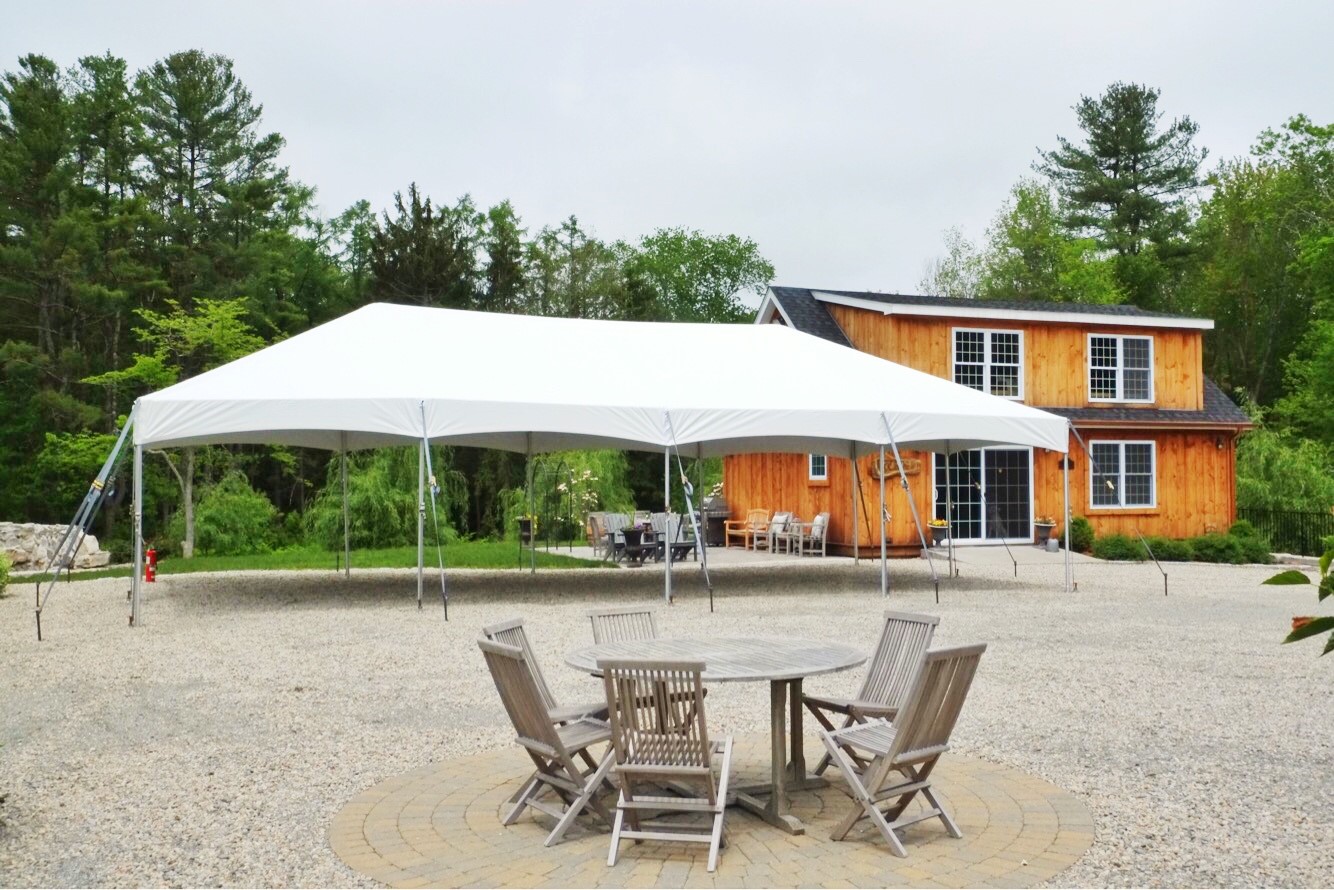
6-9 Years: Middle Age
Plasticizers mentioned above have a very strange way of behaving – they aren’t actually bound to the molecules that make up your PVC. Because of this, they begin to migrate or diffuse out of the vinyl over time. They gasify, leaving your fabric for adventures in the great wide world. As your vinyl tent ages, more and more of the plasticizers exit, reducing the overall flexibility of the fabric. At this stage, your tent may still look great but will start to feel stiffer, particularly in colder temperatures.
Now is when harsh cleaners can really start to take a toll on your vinyl tent. Chemicals designed to aggressively remove grime can weaken the fabric, causing physical wear or discoloration. In some cases, over-cleaning can expose the internal scrim, making it susceptible to mold or mildew. Always try to use mild, pH-neutral cleaners or those specifically designed for vinyl tents to protect their longevity.
Another key consideration during this phase is storage. Always store your vinyl tent in a dry, temperature-controlled environment. Humidity and fluctuating temperatures can exacerbate the loss of plasticizers, leaving the material brittle and more prone to cracking. Proper storage can extend the usable life of your tent well beyond this period.
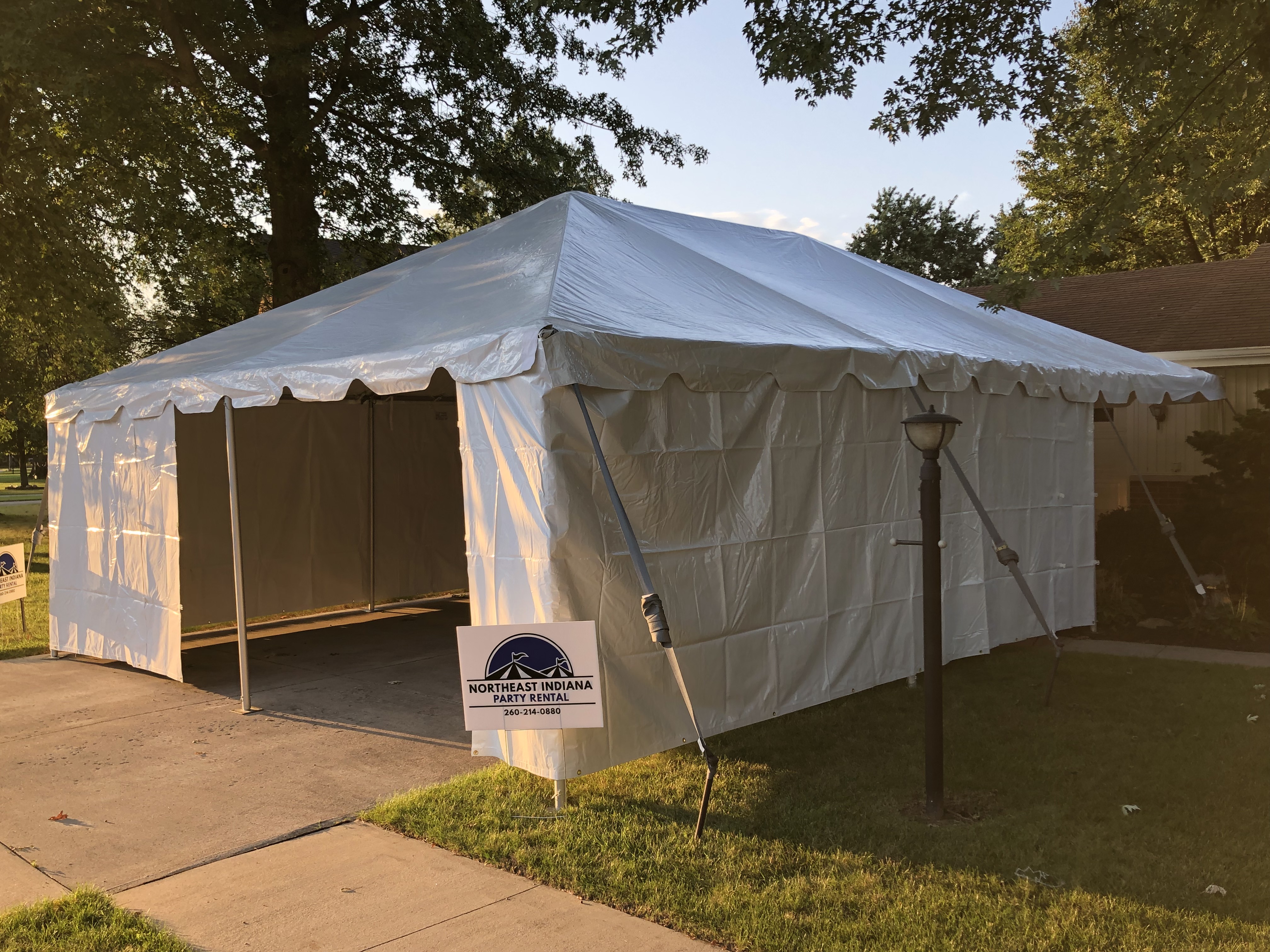
10+ Years: Golden Years
If your vinyl tent has lasted this long, congrats! It’s reached the ripe old age of “ancient” as far as vinyl fabric goes. By now, you’ll begin to see two key outcomes of your maintenance efforts:
All the care you’ve taken to maintain your vinyl tent is paying off. Your tent may still look and function well, even as it approaches the end of its lifecycle. This is a testament to your diligent upkeep and thoughtful storage practices.
A significant amount of the plasticizers will have migrated out of the fabric. While proper storage and care can slow this process, the material will inevitably become less flexible than when it was new. At this stage, extreme conditions like cold weather or high winds pose a greater risk of damage. Cold cracks, caused by the brittleness of the fabric in freezing temperatures, become a common concern.
Despite these challenges, it’s not all doom and gloom. With regular maintenance and careful use, you can prolong the life of your vinyl tent even in its later years. Periodically inspect it for signs of wear, such as small tears or discoloration, and address issues promptly to prevent further damage.
Additional Tips for Vinyl Tent Care
UV Protection: Prolonged exposure to sunlight can accelerate wear and discoloration. Consider using a UV-protectant spray to shield your vinyl tent from harmful rays.
Avoid Overloading: When storing your tent, avoid stacking heavy items on top of it, as this can cause creases and stress points that weaken the fabric.
Repair Early: If you notice small tears or holes, repair them immediately with vinyl patches or adhesive designed for tent fabrics. This prevents minor damage from becoming a larger problem.
Final Thoughts
Taking good care of your vinyl tent ensures it will provide years of reliable service. Proper maintenance, timely repairs, and thoughtful storage practices can help you maximize its lifespan. Planning ahead with proper care allows you to decide when to replace your tent inventory, rather than being forced to replace it unexpectedly due to neglect.
For more information on vinyl tent care and treatment, visit the Product Support Center or give us a call at (866) 438-8368. You can also email us at Sales@GetTent.com for personalized advice. We’rehere to help you make the most of your vinyl tents!





